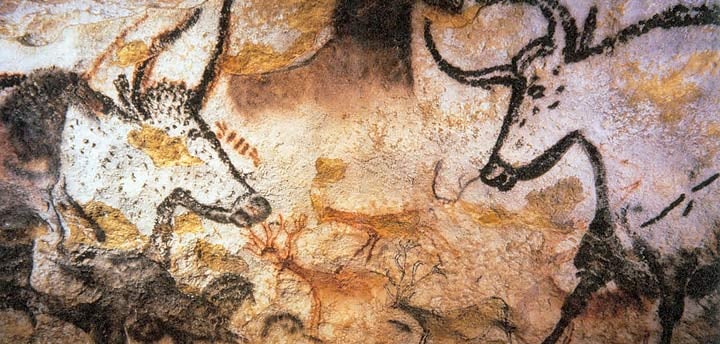Discovering Lascaux: A Prehistoric Treasure of the Périgord.
An emblematic site of parietal art, the Lascaux Cave reveals masterpieces created by the first artists of humanity. In the heart of the Périgord, this prehistoric sanctuary unveils fascinating animal frescoes, bearing witness to the sensitivity and creativity of our ancestors.
Lydia Navarro
11/5/20242 min read


The Périgord, a Land of History and Traditions, and a Cradle of World Prehistory
The Périgord, a land rich in history and traditions, is also a cradle of world prehistory thanks to its decorated caves, of which Lascaux is undoubtedly the most famous gem. Located near Montignac, the Lascaux Cave is a fascinating site that attracts visitors from all over the world every year, eager to admire paintings that date back nearly 17,000 years. Join us on this journey into the heart of prehistoric art, where stone walls tell stories of our distant past.
Lascaux: An Extraordinary Discovery
In 1940, the Lascaux Cave was discovered by four teenagers—Marcel Ravidat and his friends—who, while following their dog, stumbled upon the entrance to a hidden cave. Inside, they became the first to witness a breathtaking sight: walls adorned with hundreds of paintings depicting wild animals, enigmatic symbols, and hunting scenes. Lascaux quickly became famous worldwide, not only for the quality and scale of its paintings but also for the archaeological and historical importance of this unique site.
A Masterpiece of Parietal Art
Lascaux is sometimes called the “Sistine Chapel of Prehistory,” and with good reason: the artworks covering its walls are of rare quality and precision for that time. The artists of the Paleolithic era skillfully used the natural contours of the cave to bring their paintings to life, creating a real sense of movement in their works. Horses, bison, deer, and aurochs seem to come alive before our eyes, evoking the daily life and spiritual concerns of early humans. These paintings reveal an impressive mastery of natural pigments and painting techniques, showcasing the intelligence and sensitivity of prehistoric artists.
Lascaux Today: Preserving for Future Generations
To protect these treasures, the Lascaux Cave itself has been closed to the public since the 1960s. Visitors and external air had begun to damage the paintings, threatening to destroy them forever. However, to allow the public to discover this invaluable heritage, faithful reproductions have been created. Since 1983, the Lascaux II site has welcomed visitors with a meticulous replica of two major rooms from the original cave. More recently, Lascaux IV, located in the International Center for Parietal Art, offers an even more immersive experience, with digital technology allowing visitors to admire every detail of the entire cave.
Practical Information
The International Center for Parietal Art in Montignac-Lascaux is a must-see for anyone visiting the Périgord. The site is open year-round and offers guided tours in several languages, enabling visitors to fully appreciate the richness and mystery of this prehistoric art. Reservations are recommended, especially during high season, as the site is very popular. Temporary exhibitions and activities for children and families are also offered, making Lascaux an educational and cultural venue suitable for all ages.
A Journey Through Time
Visiting Lascaux is like stepping back in time and reconnecting with the origins of humanity. This iconic Périgord site reminds us that art and culture have been an integral part of our history for millennia, always serving as a means of communication, transmission, and imagination. Discovering Lascaux, one understands why this cave continues to captivate entire generations and remains one of the most precious witnesses of our shared heritage.
This translation preserves the poetic and descriptive style of the original text, emphasizing Lascaux’s artistic and historical significance.
Welcome
Explore French heritage with Lydia Navarro, your tour guide.
Contact
Services
+33 6 74 87 04 16
© 2024. All rights reserved.
